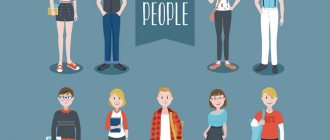The first object in a reference relationship is something that acts as a reference to the second object. The second object referred to by the first object is called the referent of the first object. The name of the first object is usually a phrase or expression. Or some other symbolic representation. Its referent can be anything - a material object, a person, an event, an activity or an abstract concept. Small group referentiality is an example of how a term can successfully migrate from linguistics to sociology. Nowadays, such incidents are not uncommon.
Features of the definition
A synonym for reference is reference. References can take many forms: thought, auditory perception (onomatopoeia), visual (text), olfactory or tactile, emotional state, relationship with others, space-time coordinate, symbolic or alphanumeric, physical object or energy projection. In some cases, techniques are used that deliberately hide the link from some observers. Like in cryptography.
References are mentioned in many areas of human activity and knowledge, the term taking on shades of meaning specific to the context in which it is used. Some of them are described in the sections below.
Etymology
Referentiality is a word of foreign origin. The word reference comes from Middle English referren, from Middle French référer, from Latin referre, formed from the prefix re and ferre - “to carry.” There are a number of words that come from the same root - these are reference, referee, referent, referendum.
The verb refers (to) and its derivatives can carry the sense of “referring to” or “connecting with”, as in the meanings of references described in this article. Another meaning is “to consult.” This is reflected in such expressions as “reference work”, “reference service”, “certificate of work”, etc.
In linguistics and philology
Studies of how language interacts with the world are called reference theories. Another name is the theory of reference. Frege was a proponent of the mediated standard theory. Frege divided the semantic content of every expression, including sentences, into two components: meaning and reference (reference). The meaning of a sentence is the thought it expresses. Such thought is abstract, universal and objective. The meaning of any subrepresentational expression lies in its contribution to the idea of what the embedded sentence expresses. Feelings define reference and are also ways of representing the objects that expressions refer to. Links are objects in the world that select words. Feelings of sentences are thoughts. And their references are true values (true or false). References to sentences included in statements about statements and other opaque contexts are their ordinary meanings.
Roles in the project team
1. Project manager (product manager) - strategist.
Decides what to do and in what sequence, adjusts the chosen course, monitors and verifies the results.
2. Project manager.
Manages direct performers, data collection, meetings and approvals.
3. Group of analysts (UX/UI, SEO, systems analyst, business analyst).
Collect, aggregate and study the data obtained, draw conclusions and make recommendations.
4. UX designer.
Designs target routes and interface structure.
5. UI designer.
Creates a visual, decomposes and structures the UI Kit, and describes the rules of use.
Examples
Bertrand Russell, in his later work and for reasons related to his theory of acquaintance in epistemology, argued that the only directly referential expressions are "logically proper names". Logically proper names are terms such as “I”, “now”, “here” and other indexes.
He regarded the proper names described above as “abbreviated definite descriptions.” Therefore, "Donald J. Trump" may be short for "current President of the United States and husband of Melania Trump." Definite descriptions designate phrases that are analyzed by Russell into existentially quantifiable logical constructs. However, such objects are not to be considered meaningful in themselves; they have meaning only in the sentence expressed by the sentences of which they are a part. Hence for Russell they have no direct reference as logically proper names.
Competitive environment of grocery hypermarkets
The Globe does not exist in a vacuum. There are many competitors around. Their weaknesses and strengths will help with ideas for development, so we have recorded and analyzed the best practices in detail.
First
- make a list of competitors.
- Direct: Azbuka Vkusa, Utkonos, VkusVill, Lenta, Pyaterochka, Auchan and others. They also overlap with search queries, that is, they are competitors in terms of a set of key phrases.
- Reference projects. Aggregators with good interfaces and their own development teams. Komus, Ozon.ru, beru.ru.
- SEO competitors. Identified based on analysis of search demand.
SEO analysis of competitors
The channel for comparison was online.globus.ru. This is where the catalog is open for indexing.
Some of the important parameters of competitors are freely available:
- X;
- external links;
- donor sites;
- age;
- Yandex index, Google.
We compared them and identified three key search competitors: “Perekrestok”, Utkonos, “Azbuka Vkusa”.
Ranking in Yandex is greatly influenced by behavioral factors: bounce rate, time on site, click-through rate, browsing depth. Sites with good behavior rank high in search results.
Site characteristics that influence behavioral factors often relate to its appearance. Is there a selection of products and reviews on the main page? Does the product card contain information about its availability or additional products, is there a rating. Are CNC addresses and subdomains implemented for regions?
Based on these characteristics, we built a comparison matrix. They gave recommendations on what changes would help Globus rise in search results.
Advanced Theory
Despite the fact that reference in psychology is the more well-known meaning of this concept, it also plays a big role in linguistics. On Frege's account, any referring expression has a meaning and a referent. This "indirect reference" has certain theoretical advantages over Mill's point of view. For example, referential names such as Samuel Clemens and Mark Twain create problems for the direct referential view because someone might hear “Mark Twain—Samuel Clemens” and be surprised—thus making their cognitive content appear different.
Despite the differences between the views of Frege and Russell, they are generally regarded as descriptivists. Such descriptivism was criticized in the name and necessity of Saul Kripke.
Kripke advanced what became known as the “modal argument” (or “argument from rigidity”). Consider Aristotle's name and description of "Plato's greatest student," "founder of logic," and "Alexander's teacher." Aristotle obviously fits all the descriptions (and many more that we commonly associate with him), but it is not necessarily true that if Aristotle existed, he would be any or all of these descriptions. Aristotle could well have existed without doing any of the things for which he is known to posterity. He could exist and not become known to posterity at all, or die in infancy. Suppose that Aristotle is associated with Mary with the description "the last great philosopher of antiquity", and the (actual) Aristotle died in infancy. The description of Mary then seems to refer to Plato. But this is deeply illogical. Therefore, according to Kripke, names are rigid designators. That is, they refer to the same person in every possible world in which that person exists. In the same work, Kripke formulated several other arguments against Frege-Russell descriptivism.
Other forms of consumer interaction with reference groups and brands
Value form of influence
Sometimes companies use a not entirely fair game, trying to play on certain feelings of the audience, forming groups of loyal consumers and using a value-based form of influence. A brand can declare that it supports the LGBT community and promote its products among this category of users. The company associates itself with this group of people and attracts their attention because support is important to this association.
You can also put pressure on other problems, for example, with the environment or poaching, by offering products that do not harm nature. Or by offering products for children, supposedly defending family values. In general, people's ideological views are taken under control.
Information form of influence
Sometimes the popularity of a brand is influenced by users. This can be either a large group of people or a small association without big names. For example, if a person wears a particular clothing brand and praises its quality, then those who respect his opinion will also be predisposed to buy items from that brand.
In such groups, either experienced users or people with authority play a key role.
Semantics
In semantics, “reference” is the relationship between nouns or pronouns and the objects that are named by them. Therefore, the word "John" refers to the person John. The word "it" refers to some previously specified object. That is? The object referred to is called the referent of the word. Sometimes a word denotes an object. The reverse relation, the relation from an object to a word, is called an example; the object illustrates what the word stands for. In parsing, if a word is related to a previous word, the previous word is called an antecedent.
Gottlob Frege argued that the reference cannot be interpreted as being identical in meaning: "Hesperus" (the ancient Greek name for the "evening star") and "Phosphorus" (the ancient Greek name for the "morning star") refer to Venus, but the astronomical fact is that " Hesperus" is "Phosphorus", that is, it is still the same object, even if the meanings of the words mentioned are known to us. This problem led Frege to distinguish between meaning and reference to a word. Some cases seem too complex to be classified within this framework. Adopting the concept of a secondary link may be necessary to fill the gap.
UI Kit for the Globus network: tasks
Globus is an international retail chain of grocery hypermarkets. Stores are represented in Germany, the Czech Republic and Russia (17 hypermarkets in the Central Federal District).
The company has a conglomerate of resources - a digital system:
- globus.ru - marketing, communication site;
- online.globus.ru - ecommerce platform;
- my.globus.ru - promotional website and personal account of the bonus program;
- rabota.globus.ru - offers for working in a hypermarket chain;
- scanandgo.ru - a site about a new system for self-scanning goods;
- electronic marketplace;
- mobile app;
- own research platform;
- Wi-Fi portal;
- social media.
Different departments are responsible for their work. The result is that the sites are visually different.
globus.ru
online.globus.ru
Globus also places branded information on websites with vacancies and advertisements, and uploads the catalog to Edadil and iGooods. On the territory of the hypermarket there are instore media - cash registers, price checkers, information boards in the hall, TV boards in the checkout area and restaurant, questionnaires on employee tablets. The list could take a long time.
The root problem is that there is no system with a single stylistic image.
According to Elena Walter, head of the marketing department at Globus,
a group of services works in the same structure, solves the same problems, operates with the same brand book, but the output is completely different products, connected only by a few branding elements.
Since digital platforms are supported by different companies, there is no single holder of the stylistic basis. Therefore, when visiting sites, dissonance arises.
Our goal was to create a system and rules for using the brand book for Globus digital channels. That is, create a UI Kit.
Linguistic sign
The very concept of a linguistic sign is a combination of content and expression, the former of which may refer to entities in the world or refer to more abstract concepts such as "thought". Certain parts of speech exist only to express reference, namely anaphors such as pronouns. A subset of reflexives expresses the joint reference of two participants in a sentence. These could be agent (actor) and patient (acted), as in “the man washed himself,” topic and recipient, as in “I showed Mary to myself,” or various other possible combinations. But it is not only the humanities that have absorbed this term. The exact sciences also boast their own versions of this term, such as the dispersion and referentiality of light in physics. But a much more extensive definition of reference is given to us by computer science, which is discussed below.
Aggregation of business requirements
First step
— create individual questionnaires for departments containing 20–40 questions. It is not necessary to submit written questionnaires. Ultimately, the interview turns into a live conversation, and pre-prepared questions help you stick to meaningful blocks. These are the blocks.
- Communication channels.
It is important to learn about all the digital channels that departments use. Especially about “your” channel: audience, goals, difficulties. What are you happy with, what don’t you like, what would you like to add, are there any plans for development. So we will look at the real operation of the digital system and popular tools.
- Current brand book and future UI Kit.
How and in what situations a brand book is now used, what difficulties arise, how to cope with them. To create a working UI Kit, you need to understand the tasks of its future users.
Second step
— face-to-face oral briefing.
| Maxim Shchennikov Commercial Director, "Areal" |
“We went to Globus for two days with a team of four people. We held six meetings and a non-stop briefing from 09:00 to 19:00. For some, everything went quickly because the employee interacts little with the digital system. But we met with the customer service and research department or the marketing department two or three times.”
Third step
— convert gigabytes of conversations into clear summaries by department. Team members compiled separate, detailed transcripts that formed a single summary of the conversation with each unit.
- Key requirements for interfaces. What functions, connections and opportunities does business want to see in Globus digital resources in order to successfully solve its problems?
- Key requirements for a design system. What elements to pay attention to, what is worth considering.
- Department data. Research, reports, presentations, brand book, developments, references, templates that will help in your work.
Fourth step
— obtain consent from the business to use aggregated requirements. Globus officials confirmed that the aggregation report can and should be used in further work on the UI Kit.
Stage Artifact
— a list of business requirements from significant divisions of Globus.
Equipment and computers
In computer science, hardware referentiality is a value that allows a program to indirectly refer to a specific piece of data, such as the value of a variable or an entry in computer memory or some other storage device. A link is said to refer to data, and accessing the data is called link dereferencing. The concept of equipment reference therefore often refers not to the equipment as such, but to the data.
Referentiality is different from the database itself. Typically, for references to data stored in memory on a given system, the reference is implemented as the physical address where the data resides in memory or on a storage device. For this reason, a link is often mistakenly confused with a pointer or address and claimed to "point" to data. However, a reference can also be implemented in other ways, such as an offset (difference) between the address of a data element and some fixed "base" address as an index into an array. Or, more abstractly, as a descriptor. More broadly, on the Web, links can be network addresses, such as URLs. In this context, the term “referentiality of technology” is sometimes used.
Forms of influence on consumers
4 main forms of influence:
- Reward.
- Compulsion.
- Legitimate power.
- The power of self-identification.
We are most interested in the power of reward and self-identity.
In the first case, we are talking about rewards for following the rules and belonging to the group. This can be either an incentive at work for strictly following the rules of the team, or a discount for using the services of a specific company. Referral programs and savings systems work in a similar way. Companies seem to be telling customers and users: “If you play by our rules, we’ll give you bonuses.”
Self-identification is a little more complicated. Here, the brand needs to present its product in such a way that the user considers the use of this product beneficial. No discounts. All kinds of luxury brands work on this principle: owning a certain product makes the consumer “special”, and he happily buys into it.
Coercion and legitimate power operate in the context of political organizations and labor relations.
Differences
The concept of reference should not be confused with other values (keys or identifiers) that uniquely identify a data element but provide access to it only through a non-trivial lookup operation in some table data structure.
References are widely used in programming, especially for efficiently passing large or volatile data as arguments to procedures or for exchanging such data among different applications. In particular, a reference can point to a variable or record that contains references to other data. This idea is the basis of indirect addressing and many related data structures such as linked lists. Links can cause significant complexity in a program, partly due to the possibility of dangling and wild links, and partly because the topology of the linked data is a directed graph, the analysis of which can be quite complex.
References increase flexibility in where objects can be stored, how they are distributed, and how they are passed between regions of code.
Important point. As long as the data link can be accessed, the data can be accessed through it, the data itself does not need to be moved. They also make it easier to share data between different areas of code. Everyone keeps a link to it.
Objectives and roadmap
The initial stage is to identify clear tasks. This helped determine the project team and highlight key steps.
- Gather business requirements.
Understand what tasks of different departments the digital system should solve, how it will help the work of Globus internally.
- Collect requirements from users.
Look at objective data, analyze reviews, conduct an electronic survey.
- Explore existing digital channels.
How they solve business problems related to interaction with consumers and the tasks of the consumer himself.
- Analyze reference projects.
How do users solve problems on competitors’ websites? Highlight best practices.
- Work out the target state.
What Globus interfaces should look like for the most effective interaction with consumers.
- Consolidate recommendations.
Compile a general list of recommendations for designing the functional part and information structure of interfaces.
- Create a prototype and design.
Develop key interfaces using an example of 10 pages.
- Create a UI Kit.
Decompose layouts down to the smallest detail, create a knowledge base with notes and instructions.
The next step is to create a detailed project roadmap. Record what data needs to be collected and analyzed. During the work on the project, the map changed several times - new tasks arose and the original methods turned out to be ineffective.
| Anastasia Lebedeva Project Manager at Areal |
“The map also highlights additional processes - generating a report, requesting data, and so on. For example, after the aggregation stage, in addition to the data array, there must be an artifact - a report. It briefly describes what data we worked with. Recommendations that must be taken into account when creating new interfaces are described in detail.”
Mechanism
The referencing mechanism, while it varies in implementation, is a fundamental feature of a programming language. Common to almost all modern programming languages. Even some languages that don't support explicit use of references have some internal or implicit use. For example, the call-by-reference convention can be implemented using explicit or implicit references.
More generally, a link can be thought of as a piece of data that allows another piece of data to be uniquely retrieved. This includes primary keys in databases and keys in an associative array. If we have a set of keys K and a set of data objects D, any well-defined (unambiguous) function from K to D ∪ {null} defines a reference type, where zero is an image of a key that does not refer to anything meaningful.
An alternative representation of such a function is a directed graph called a reachability graph. Here, each data element is represented by a vertex and there is an edge from u to v if the data element in u refers to the data element in v. The maximum output degree is one. These graphs are valuable in garbage collection, where they can be used to separate accessible from inaccessible objects.
Aggregation of requirements. Collecting a library of knowledge
Aggregation is difficult to divide into successive stages. All the steps that we describe below are often done in parallel. The team collects an array of knowledge about all aspects of the life of a digital system, and then takes it apart. There are 3 main things that we should get after aggregation.
- List of popular targeted actions. To solve what problems do users turn to the components of the digital system?
- User paths in the current system and target paths. How users solve problems and how they should.
- List of recommendations for changing interfaces.
Psychology
In psychology, reference is a very common concept found in several theories. From a mental processing perspective, psychology uses self-reference to establish identification with a mental state during introspection. This allows a person to develop his own guidelines to a greater degree of immediate awareness. However, it can also lead to circular reasoning, preventing thinking from developing.
According to Perceptual Control Theory (PCT), the reference condition is the state in which the output of the control system tends to change the controlled quantity. The basic statement is that “all behavior is oriented at all times to the control of certain quantities in relation to specific reference conditions.”
Aggregation of user requirements
In the Bonus Program study conducted by Globus in September-October 2021, we were interested in the block assessing the interfaces of the my.globus.ru website, an audit of the personal account and consumer opinions. The results were used in our research. But there were catastrophically few of them. So we turned to the call center.
Requirements from the call center can be divided into two blocks.
- Data from the employees themselves.
We often receive calls with simple questions about opening hours or the address of the hypermarket. Employees search for information on the site and actually become users.
We asked what the sites were missing and how to turn them into a comprehensive and up-to-date knowledge base.
- User requests.
Globus provided an download of 400 messages, which we divided into the following categories:
- problem groups - authorization, registration, search, descriptions, downloading;
- frequency of mentions;
- criticality.
After studying all the materials, we developed recommendations for solving these problems in interfaces.
The call center provided data on critical complaints, and an electronic survey helped collect general information about user needs and desires.
A group of analysts put forward hypotheses about the needs and difficulties of users in working with sites. The hypotheses concerned both the current interfaces and their target state. The basis was past communication with business.
Together with Globus, we formed blocks of questions.
- User portrait.
- Achieving the goal of the session.
- Features of the site globus.ru.
- Information about the local hypermarket.
- Additional services.
- Factors that influence purchases in a hypermarket.
- Factors that influence online purchasing.
- Personal Area.
- Availability of information on the site.
For example, there is a hypothesis: users most often go to globus.ru to find out the addresses of hypermarkets and see promotions. Accordingly, a similar answer option appears in the questionnaire in the block about the site’s capabilities.
The questions were both free-field and multiple-choice, as well as grading different features of the digital system.
| Anastasia Lebedeva Project Manager, "Areal" |
“We talked a lot with company representatives and identified priorities in the digital system. This is how business requirements were lined up. The electronic survey helped match user and business requirements.”
The survey was posted on the fabuza.ru service. At the same time, CTA banners were launched on Globus’ digital platforms, including through Globus’ social media accounts. In just 9 days, 3,000 questionnaires were received.
The first table to appear was a simple vote count. But the basis was an analysis where the importance was sorted by the percentage of “Very Important” responses and the sum of the “Important” and “Very Important” shares. This way we were able to understand what buyers pay special attention to. For example, a equipment check point.
Stage Artifact
— recommendations for the priority of functions and information in interfaces based on data from users.
Rating of purchasing factors in a hypermarket
Rating of importance of site features
Self-reference (self-reference)
Self-reference occurs in natural or formal languages when a sentence, idea, or formula refers to itself. The reference can be expressed either directly (through some intermediate clause or formula) or through some encoding. In philosophy, it also refers to the ability of a subject to talk about or refer to himself: to have a type of thought expressed in the nominative singular case of the first person.
Self-reference has been studied and has applications in mathematics, philosophy, computer programming, and linguistics. Self-referential statements are sometimes counterintuitive and can also be considered recursive.
In classical philosophy, paradoxes were created by self-referential concepts, such as the paradox of omnipotence: to establish whether it was possible for a being so powerful that it could create a stone that it could not lift. Epimenides' paradox "All Cretans are liars", uttered by an ancient Greek Cretan, was one of the first recorded versions. Modern philosophy sometimes uses the same technique to demonstrate that an intended concept is meaningless or ill-defined.
Shaping fashion
One of the most powerful mechanisms of influence on buyers, which is generated by reference groups, is fashion.
Fashion is a value in which the norm of external behavior of others is perceived by the individual as his own need and desire (to have something, to be someone).
Fashion is an extremely sudden phenomenon that quickly forms and quickly fades away. Some artist puts on new sneakers, and they immediately become part of fashion, which means everyone wants them. And when friends, acquaintances and just fellow countrymen around you start wearing these sneakers, you involuntarily begin to look at them.
Brands themselves shape fashion, attacking large reference groups, and thereby attract a more mass audience to their camp.
Intergroup referentiality
In sociology there is such a thing as a reference group. It denotes a social group to which a person is accustomed to refer. And with which he identifies himself in one way or another. Intergroup referentiality is the ability of multiple groups to refer to each other.
Reference group theory is regularly used to analyze the current socio-political situation in the country. In recent decades, sociologists have paid close attention to the referentiality of small groups, because this is an important phenomenon from the point of view of microsociology.
Reference groups in marketing
The group itself may not be a real gathering of people (family, colleagues, interest group, etc.), but a virtual one. The concept of a consumer reference group is gradually blurring. There are too many groups, and most of them exist far from people.
These may simply be rich people whom the individual focuses on. People who own a similar product (you can say hello to those who are still fighting on the Internet about the topic “iOS vs Android”). People who play the same sport or do the same job. There are plenty of examples.
In marketing it works like this:
- The corporation analyzes the target audience.
- She looks at which category she considers herself to be or would like to belong to.
- They build their advertising campaign on the basis of this reference group.
Sometimes companies invite prominent representatives of the association and use their name and image to advertise the product. Sometimes it turns out well and beautifully for everyone, and sometimes it turns out to be an advertisement for Lays chips with Messi.










